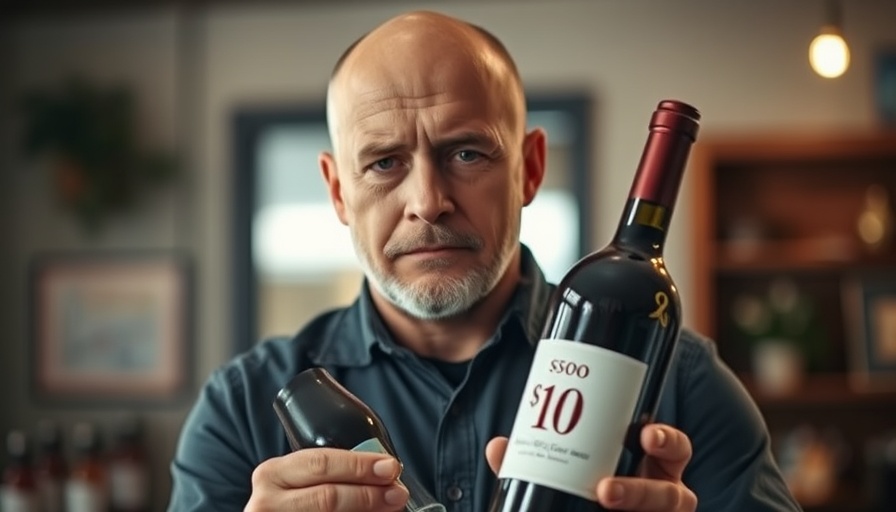
Unraveling the Price of Wine: A Taste Test
Wine aficionados often ponder an age-old question: what exactly justifies the price differences in wine? In this conversation, sparked by the recent video titled $10 vs $500 Wine Taste Test — Is Expensive Wine a Scam?, we're diving into the nuances of wine pricing, which can range immensely from budget-friendly to exorbitant. In a blind taste test comparing the likes of a $10 entry-level Shiraz from Australia's Penfolds and the iconic $500 Grange, distinctions become both clearer and murkier.
In $10 vs $500 Wine Taste Test — Is Expensive Wine a Scam?, the discussion dives into the significant price disparities in wine, exploring key insights that sparked a deeper analysis on our end.
Why Are Some Wines Expensive?
The wine world is rife with curiosities. It seems absurd that a simple fermented grape juice can jump from a mere $10 bottle to a staggering $500. However, the differences often stem from the grape sourcing, aging processes, and the reputation of the vineyard. For instance, Penfolds, known for producing a wide variety of wines, provides affordable options that may lack the complexity and exclusivity of their higher-end counterparts. The $10 wine, the Konga Hill Shiraz, for instance, is an approachable blend that may lack the depth appreciated by seasoned drinkers.
The Quality of Experience
Wine is not just about taste; it's about the experience it brings. A bottle of Grange is not only about its flavor profile but also about the story it carries — a blend of heritage, tradition, and prestige that enhances its value. Consumers at upscale wine bars appreciate these narratives, often seeking wines that are as much conversation starters as they are pleasurable beverages. This story-driven marketing is what makes some wines coveted collectibles rather than simple drinks.
Cheap vs. Expensive: Is There a Real Difference?
The blind taste test revealed a striking observation. While the $10 and $500 wines demonstrated noticeable differences, the gap between mid-range options—like the $50 Bin 128 and the $100 St. Henry—was starkly narrower. Enthusiasts may find great value in lower-priced wines that offer pleasurable drinking experiences. For those operating cozy local wine bars or trendy wine bars for date night, having a mix of price points on their menus allows patrons to explore a world of flavors without financial pressure.
Takeaway: Spend While You Savor
Be it a $10 or a $500 bottle, the best wine experience is subjective. Consumers should not feel pressured to buy expensive wines to appreciate them. Instead, they can explore various flavorful options, from cozy local wine bars with charcuterie boards to upscale wine bar experiences with rare vintages. Ultimately, whether you are indulging every week, celebrating a special occasion, or simply enjoying a glass after work, the perfect wine choice caters to both your palate and pocket.
 Add Row
Add Row  Add
Add 




Write A Comment